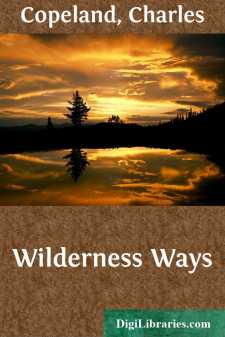Categories
- Antiques & Collectibles 13
- Architecture 36
- Art 48
- Bibles 22
- Biography & Autobiography 816
- Body, Mind & Spirit 145
- Business & Economics 28
- Children's Books 17
- Children's Fiction 14
- Computers 4
- Cooking 94
- Crafts & Hobbies 4
- Drama 346
- Education 58
- Family & Relationships 59
- Fiction 11834
- Foreign Language Study 3
- Games 19
- Gardening 17
- Health & Fitness 34
- History 1378
- House & Home 1
- Humor 147
- Juvenile Fiction 1873
- Juvenile Nonfiction 202
- Language Arts & Disciplines 89
- Law 16
- Literary Collections 686
- Literary Criticism 179
- Mathematics 13
- Medical 41
- Music 40
- Nature 179
- Non-Classifiable 1768
- Performing Arts 7
- Periodicals 1453
- Philosophy 66
- Photography 2
- Poetry 897
- Political Science 203
- Psychology 45
- Reference 154
- Religion 516
- Science 126
- Self-Help 85
- Social Science 82
- Sports & Recreation 34
- Study Aids 3
- Technology & Engineering 59
- Transportation 23
- Travel 463
- True Crime 29
Our website is made possible by displaying online advertisements to our visitors.
Please consider supporting us by disabling your ad blocker.
Black Bruin The Biography of a Bear
by: Charles Copeland
Categories:
Description:
Excerpt
INTRODUCTORY
With the possible exception of the deer family, the bear is the most widely disseminated big game, known to hunters.
He makes his home within the Arctic Circle, often living upon the great ice-floe, or dwells within a tropical jungle, and both climates are agreeable to him, while longitudinally he has girdled the world.
Of course bruin varies much, according to the climate in which he lives, and the conditions of his life, but all the way from the poles to the tropics he retains certain characteristics that always proclaim him a bear.
He is a plantigrade, walking like a man upon the soles of his feet. There is more truth than poetry in Kipling's poem, "The Man Who Walks Like a Bear," for some men do walk like a bear.
Bruin's four-footed gait is a shuffle and a shamble, rather clumsy and ludicrous, but it takes him over the ground at a surprising pace. Queer, also, is the fact that the bear combines great dexterity with his seeming clumsiness, as many a hunter has found to his cost. His tree-climbing accomplishments are likewise remarkable, when we consider his great size and weight. The grizzlies, and some other large varieties, do not do tree-climbing, except when they are young. A grizzly cub can climb a tree, but his wrists soon become too stiff to permit of their bending about the trunk.
Bruin's disposition also varies with the climate he inhabits. This in turn is because his diet varies in differing latitudes. The farther south he ranges, the more of a vegetarian he becomes. Consequently, he is not so ferocious. The great white polar bear is largely carnivorous, so he is a creature not to be trifled with; while on the other hand, the little African sun bear is a rollicking, social, good-natured little chap, weighing many times less than his fierce cousin.
Formerly, it has been supposed that the Numidian lion and the Bengal tiger were the largest carnivorous animals in existence, but more recent discoveries show that our Alaskan brown bear, found upon the peninsulas of lower Alaska and Kodiak Island, is easily the master of either, in size or strength. Some of the splendid skins taken from these, the largest of all the bears, measure fourteen feet in length. Alaska also gives us the smallest North American bear, the glacial bear.
Californians are wont to tell us that the only true grizzly is that found upon the cover of the Overland Monthly, but they overlook the fact that the name was given to bears found along the Missouri River by Lewis and Clarke, years before California, with all its wealth, was discovered.
In Russia, a fine specimen of the family is found in the Ural Mountains. His peculiarity is a white collar about the neck, so his Latin name, Ursus collaris, means the bear with a collar. All through the Himalayas, this restless plantigrade has wandered, and even far down upon the low-lying plains of India and China; but all the way he shuffles and shambles and is the same droll fellow.
The bear's vegetable diet consists of berries, nuts and many kinds of roots....





